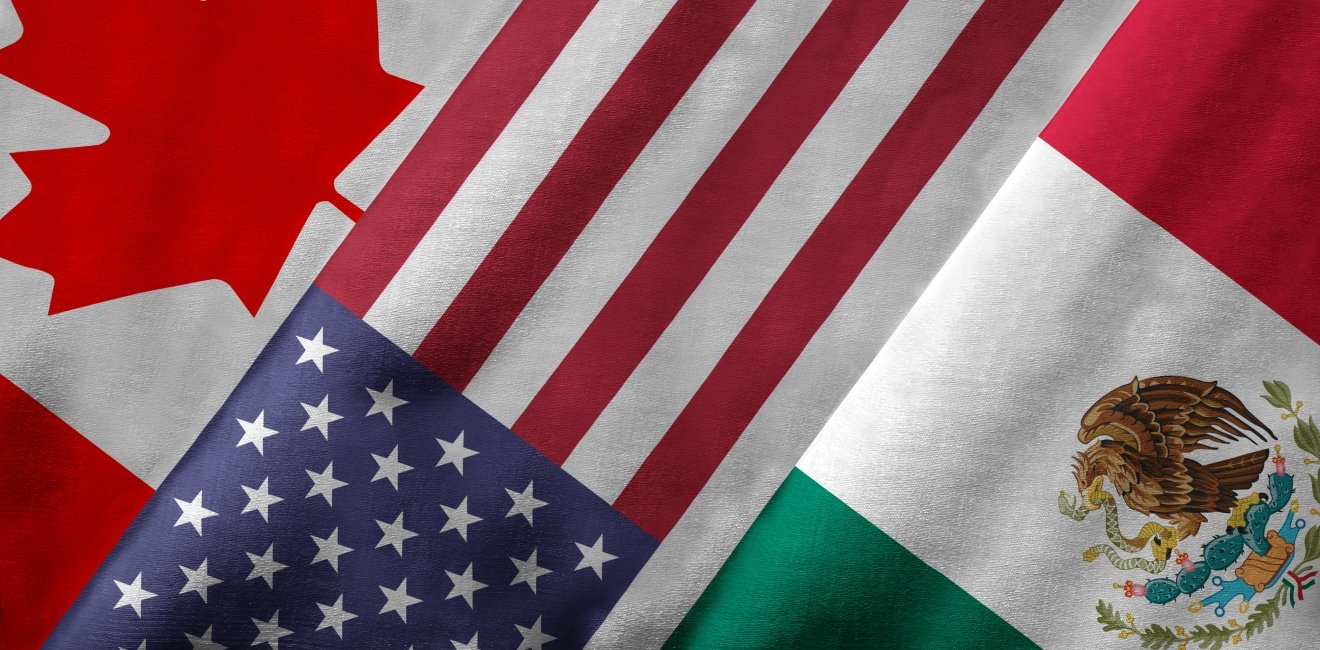July 1st marks the second anniversary of the US-Mexico-Canada trade agreement (USMCA). The first two years look promising, but it is not yet clear if the outcomes will be sufficient to retain public and political support when the agreement is reviewed in 2025-26. Given USMCA’s economic importance for jobs and business across the continent, we should be thinking through the best ways to judge the agreement’s success and to keep the public well informed.
The trade pact was passed with overwhelming support in the three countries, including from US democrats and republicans. It provides forward-looking paths to address North America’s pressing trade challenges, including digital and other transformations in the economy, supply chain resiliency, global competitiveness, plus labor and environmental issues. The US had taken priority themes, such as labor rights, digital trade, and inclusiveness, from USMCA to inform new economic partnerships with the Americas, the Indo-Pacific, and Europe.
USMCA has boosted government-to-government engagement through its committees and senior level exchanges. USMCA is complemented by the reintroduction a North American Leaders' Summits (NALS), the US-Mexico High Level Economic Dialogue and the Roadmap for a Renewed US-Canada Partnership. The three governments recognize that USMCA alone does not provide sufficient support for needed economic collaboration given the breadth of North America’s economic interconnection and the tough global competition.
Under USMCA, trade has bounced back from pre-covid levels, averaging a 6% increase across the region from 2019 to 2021. To add perspective, during 2021, a record 75% of Canadian and Mexican imports came from the United States, making both countries the US’s largest export markets. Both are also the US’s largest trading partners, accounting for more than twice US trade than with China.
Dealing with controversies, USMCA is off to a fast start addressing many more trade-related disputes in two years than its predecessor, the North American Free Trade Agreement (NAFTA). This is clear regarding labor, where USMCA’s new Rapid Response Mechanism (RRM) has shown promising initial results in favor of collective bargaining rights in Mexico.
In sum, the agreement is playing a positive role in increasing trade flows, reinvigorating bilateral and trilateral fora in North America, and bolstering channels for investors, exporters, importers, non-governmental groups, and governments to seek to resolve problems and disputes. Nevertheless, there are many irritants to be addressed in the massive commercial relationships that account for over $2 million a minute in trade between three countries. Contentious issues touch on food and agriculture, energy, critical minerals, and autos.
Not surprisingly, the degree of overall progress remains unclear. It is not yet evident if USMCA dispute settlement cases will resolve significant disagreements over rules of origin in the auto industry or equitable market access for dairy products, for example. In addressing concerns with Mexico’s energy policies and treatment of investors, the US is so far encouraging private dialogue on specific disputes and “greener” Mexican energy policies, rather than initiating formal USMCA complaints.
Experts point out that despite early successes in encouraging transparent labor union elections, progress on labor democracy and raising wages in Mexico will not demonstrate substantial results for years, and some question how much positive impact USMCA can have on productivity in Mexico, pointing to systemic problems in Mexico’s economy.
Additionally, while Mexico has great opportunities to attract new investments, analysts and business stakeholders point to dark clouds given Mexico’s practices on agricultural biotechnology, private investment, energy, and the Rule of Law. In addition, key USMCA areas with potential to produce growth are yet to be tested, including expanding digital trade and regulatory cooperation.
How should we measure USMCA’s success? In a post-COVID system, increases in trade flows are not enough to gain broad support for trade agreements, much less deliver inclusive and sustainable growth. The pandemic and the invasion of Ukraine underscore the importance of goals that go beyond trade balances, such as decoupling supply chains from non-democratic countries like China and Russia. Promoting workforce development, the role of Small and Medium Enterprises (SMEs), better border management and reducing emissions will also be important criteria to be considered.
While implementation to date shows that USMCA is a credible update of NAFTA, tracking progress across such areas is vital, especially as the agreement will be reviewed in 2025-26. Given the many stakeholders whose business and jobs depend on the certainty in North American trade and those who want to see a more inclusive, competitive, and sustainable North America, we should start now to build agreement on key criteria, for example:
- Growth metrics
- How much trade and investment has grown, including digital trade
- How many jobs are attributable to the USMCA marketplace?
- Are SMEs taking advantage of USMCA?
- Have border processing and security improved?
- Has successful dispute resolution taken place?
- Is regulatory cooperation promoting USMCA goals?
- Inclusion indicators
- What specific gains have been made in the labor sector? On the environment?
- Are more nontraditional participants from civil society and vulnerable groups included
- Is there more collaboration on workforce development? What advances have been made to help workers?
- Are federal authorities adopting “whole of government” approaches and including sub-federal players and USMCA’s many stakeholders?
- Public outreach
- Is there substantial transparency on USMCA implementation. Is there serious work underway educating publics about USMCA’s key role?
To win hearts, minds, and wallets, the benefits of North American trade need to be made explicit. All three countries are scheduled to have national elections before UMSCA’s mandatory review, and trade issues could easily again be subject to polemical debate, as happened over NAFTA in 2016. In the 90s, NAFTA supporters incorrectly anticipated that common rules would deliver economic growth and increased opportunities for industries, reducing initial opposition to the trade pact. Vital lessons from the NAFTA experience include that broad stakeholder support, well informed public debate, and targeted efforts to help industries and groups disadvantaged by technology and trade are all needed. Otherwise, the political debate can deteriorate to undermine the clear benefits of North American commercial collaboration.
To avoid shortfalls like NAFTA’s experience, North America needs a transparent and serious discussion about USMCA within which all three governments can adjust what needs correcting in the agreement, and simultaneously work to make the facts and benefits well known. For a good review of USMCA, one needs comprehensive metrics, serious deliberation, and effective “public diplomacy” to help assure that Americans, Canadians and Mexicans are well informed about progress and what is at stake.
Earl Anthony Wayne teaches at American University and is Advisory Board Co-Chair of the Wilson Center’s Mexico Institute. He was Ambassador to Mexico and Assistant Secretary of State for Economic and Business Affairs.
Diego Marroquín Bitar is a public policy expert from Georgetown University. He specializes in US-Mexico relations, trade, labor mobility, and has been published in academic journals and in U.S., European and Latin American media outlets.








